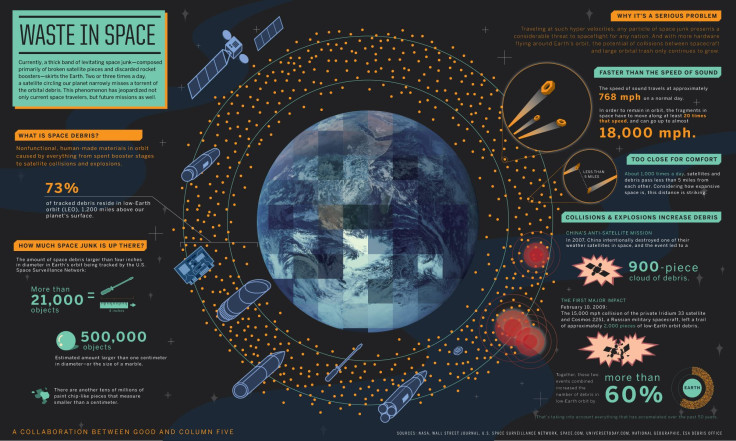Move Over, Halloween Asteroid, An Unknown Object Will Hit Earth In November

Last week's report of a massive asteroid making a "close approach" to Earth on Halloween was a bit of spooky news, but there's a new object on its way that will actually hit Earth next month. WT1190F is a tiny, mysterious object recently spotted by telescopes that will hit Earth on Nov. 13. Luckily, it's less a threat and more of a scientific opportunity.
WT1190F is a piece of man-made space junk, measuring three to six feet in length, that was once lost to the cosmos, according to Nature. The object, which could be a remnant rocket stage from an Apollo mission, presents a unique opportunity for astronomers to track an artificial object. The orbits of only 20 man-made objects are currently being tracked, Nature reported. First observed by the University of Arizona's Catalina Sky Survey, the object has a highly elliptical orbit that sends it beyond the moon. The survey previously observed the object in 2013.

WT1190F's return trip to Earth has excited scientists who enjoy watching things burn up in Earth's atmosphere. The object is calculated to disintegrate in the atmosphere over Sri Lanka, with any surviving bits expected to land in the Indian Ocean. The object is unlikely to cause any damage, but it will burn bright enough to put on a pretty decent show.
Astronomers have made observing the object a priority. It provides the first opportunity to study an artificial object returning to Earth. The best guesses for what it is, other than an Apollo remnant, are a discarded solar panel and a spent rocket stage.
"The expected November 13 reentry of what is likely to be a rocket body poses very little risk to anyone but could help scientists improve our understanding of how any object – man-made or natural – interacts with Earth’s atmosphere," the European Space Agency explained. Because of the early detection, scientists can observe the re-entry in great detail.
© Copyright IBTimes 2025. All rights reserved.





















